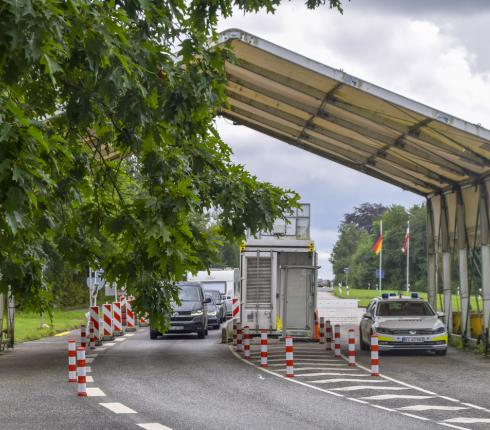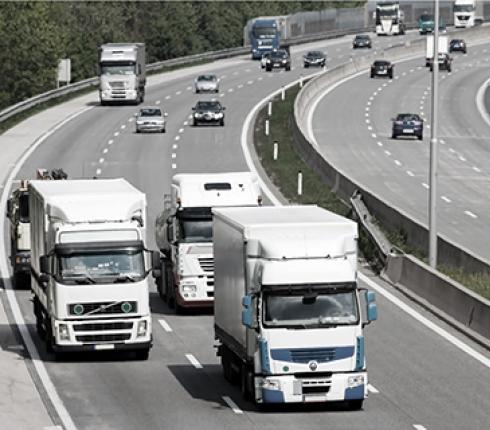NJORD Estonia: Working and rest time of road transport freight sector workers
In the field of road transport, the distinction between mobile and non-mobile workers is made in terms of working time. For mobile and non-mobile workers, different legislation applies both in European Union law as well as in Estonian law.
Mobile workers are all employees working as a travel or flight crew member in a company providing passenger or freight transport services by road, air or inland waterway transport. All other workers in the field of transportation, who are not mobile workers, are non-mobile workers.
Work and rest time of non-mobile workers in road transport freight sector
Non-mobile workers in the road transport freight sector are subject to the normal rules of work and rest time as laid down in the Employment Contracts Act (ECA).
According to § 46 (1) of ECA, the total working time may not exceed 48 hours on average for a seven-day period within a calculation period of up to four months, unless another calculation period is provided by law. However, by way of exception, § 46 (3) of ECA allows for an average working time of up to 52 hours per seven-day period. This requires a special agreement, which the employee can cancel at any time with two weeks' notice, and a separate record for the employees concerned is to be kept by the employer.
A non-mobile worker must be provided with a minimum daily rest period of at least 11 consecutive hours, as well as a minimum weekly rest period of at least 48 hours and 36 hours in case of using aggregated working time.
Employment Contracts Act also applies to non-mobile employees’ breaks. 47 (2) of the ECA requires an employee to be allowed to have at least a 30-minute break during a working day that is longer than six hours; any reverse agreement is void. This break during the working day is not counted as working time unless the nature of the work makes it impossible to provide a break and the employer creates an opportunity for the employee to rest and eat during working hours. In addition, Sections 9 (2) and 91 (2) of the Occupational Health and Safety Act (OSH) provides that to prevent in the case of high physical or mental workload, the employer must allow the employee breaks during the working day or working shift that are included in the working hours.
Working hours of mobile workers
The working and rest time rules of the Employment Contracts Act partly also apply to mobile workers, that is workers who move around, but first and foremost their working hours are regulated by the Traffic Act (TA).
According to § 130 (5) of the TA, the average weekly working time of the driver, including overtime, may not exceed 48 hours. § 130 (6) of the TA allows the weekly working time to be extended to 60 hours if the average working time of four consecutive months does not exceed 48 hours per week.
Unfortunately, Estonia has not transposed the rules laid down by the directive in the European Union, which aim to ensure that working hours are not exceeded when working with several employers. According to Directive 2002/15 / EC, the total number of working hours worked with different employers is constituted as working time and the employer requires the mobile worker to submit a written record of the time worked with another employer. In Estonia, however, there is no legal provision obliging the employer to take into account the time worked by the employee with another employer, there is no mechanism for controlling the amount of working time worked with another employer nor means of enforcement powers.
When working at night, additional restrictions on the length of working time apply. For night work, the driver's daily working time may not exceed ten hours per each 24-hour interval. For mobile workers, night work is considered to be working between 00.00 and 06.00. For non-mobile workers, the night time is considered to be between 22:00 and 06:00.
If during the journey, the night time limit cannot be followed for reasons beyond the driver's will and this was not known prior to the commencement of the journey, the driver may deviate from the limit of working time in order to find a suitable stopping place or, if necessary, for another unavoidable need arising from the work process, if he/she ensures compliance with the traffic and safety requirements.
Driving time
The working time of mobile workers separately distinguishes driving time from other working time. There are restrictions on this laid by Regulation No 561/2006 of the European Union. Since the European Union regulation is directly applicable, it does not require transposition, but road transport operators have to rely directly on the regulation to organize the working time of their employees.
In addition, the European agreement concerning the work of crews of vehicles engaged in international road transport (AETR), adopted on 1 July 1970, applies to the Member States of the European Union.
In addition to the Member States of the European Union and the European Economic Area, the states participating in AETR include Albania, Andorra, Armenia, Azerbaijan, Bosnia and Herzegovina, Kazakhstan, Liechtenstein, Macedonia, Monaco, Montenegro, Moldova, San Marino, Serbia, Turkmenistan, Turkey, Ukraine, Uzbekistan, Belarus and Russia.
If a driver works on an international transport which departs from the territory of a Member State of the European Union and includes a journey to or through the territory of a state participating in AETR, the working time rules contained in the AETR shall be complied with throughout the journey.
However, in practice, the provisions of the AETR have been harmonized with Regulation No 561/2006 in force in the European Union.
Under Regulation No 561/2006 and the AETR, the daily driving time must not exceed nine hours. Not more than two times per one week can this time be extended to ten hours. The weekly driving time must not exceed 56 hours or 90 hours in total for every two weeks.
Thus, the working time of a mobile worker in one week can include up to 56 hours of driving time and in addition to this up to four hours of working time that is not driving time. If there is less driving time, the rest of the working time may be longer provided that the maximum working time does not exceed 60 hours per week. During a two week period, the average driving time may not exceed a total of 45 hours.
Rest period of mobile workers
Under Regulation No 561/2006 and the AETR, the regular daily rest period is at least 11 hours and can be divided into two parts, the first of which must last at least three hours uninterrupted and the second one at least nine hours. Thus, if the driver divides the daily rest period into parts, it must be longer: if the minimum daily rest period is used in one part the minimum daily rest period is 11 hours, but when split up in two parts, the rest period is 12 hours.
Regulation No 561/2006, like the AETR, also provides for the possibility of a reduced daily rest period of less than 11 hours, but of at least nine hours. If the part of the daily rest period within a 24 hour period is at least nine hours, but less than 11 hours, the daily rest period in question shall be considered a reduced daily rest period. The driver may take a maximum of three reduced daily rest periods per week. In addition, in an emergency or following instructions from the police or from another authority, it is permissible for the driver to interrupt his rest period for a few minutes to change the position or location of his vehicle.
Under Regulation No 561/2006 and the AETR, a regular weekly rest period for a mobile worker lasts at least 45 hours and a reduced weekly rest period lasts at least 24 consecutive hours. In this case, the week is considered to be a period starting at 00.00 on Monday and finishing at 24.00 on Sunday.
The driver must take either two regular, i.e. at least 45 hour weekly rest periods or one regular (45 hours) and one reduced at least 24 hour rest period for any two consecutive weeks. Thus, the weekly rest period can be reduced to 24 hours once every two weeks.
In case of applying the reduced weekly rest period, the rest time missing from 45 hours of rest shall be compensated by an equivalent rest period, which is to be taken in one part before the end of the third week following the week in question, together with another rest period of at least nine hours.
Mobile workers’ breaks during working days
After a driving period of four and a half hours, the driver must take an uninterrupted break of at least 45 minutes unless he starts a rest period. There may be a break of at least 15 minutes instead of this break, followed by a break of at least 30 minutes, provided that both are matched to the driving time so that there is a total of at least 45 minutes of breaks for every four and a half hours driving period.
Regulation No 561/2006 and the AETR only regulate the driving time and driving time breaks, but not the entire working time of the mobile worker and any breaks therefrom. Therefore, paragraph 130 (10) of the TA also applies to the breaks of mobile workers, which stipulates that during the working time the driver may not work without taking a break for more than six consecutive hours and working time of six to nine hours shall be interrupted for at least a 30-minute and working time of more than nine hours for at least a 45-minute uninterrupted break.
Triinu Hiob has written more about the working and rest time of road transport freight sector workers in magazine Juridica.































